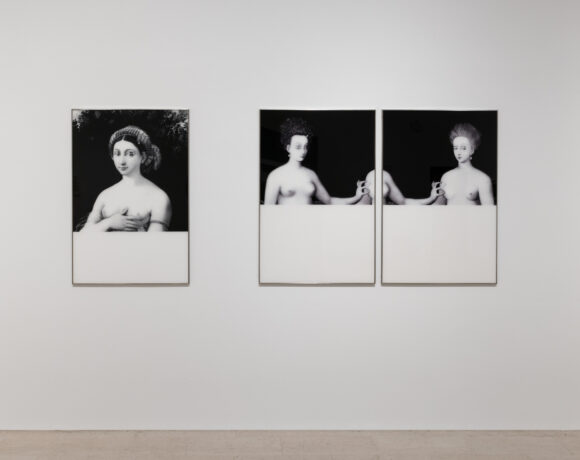The solo show dedicated to Niki de Saint Phalle currently ongoing at MUDEC museum in Milan is the first Italian complete retrospective on this artist, offering a unique opportunity to understand her work and its significance. Niki de Saint Phalle had a unique ability to gather an artistic and cultural world around her, thanks to her charisma. Her most famous works are monumental pieces that create worlds and imaginaries, forming an art ecosystem. Running until February 16, 2025, the MUDEC exhibition explores her artistic and personal journey, two aspects that evolve in tandem in the life of an artist who often called herself a «woman and artist». Born in Neuilly-sur-Seine, she moved to the United States at a young age, though she maintained strong ties with France. In the 1950s, she lived in Paris, visiting Mediterranean countries and discovering Antoni Gaudí’s work in Spain. Beyond the richness of her artistic encounters and successes, her life was marked by painful family experiences and psychiatric challenges.

Niki de Saint Phalle, “The Tarot Garden”, 1991. Prestatore: Il Giardino dei Tarocchi © 2024 NIKI CHARITABLE ART FOUNDATION. All rights reserved. Photo: Ed Kessler
It’s difficult to briefly define her work, especially in light of this exhibition’s complete portrayal. Examining the names of some of her patrons, one can grasp the impact of her artistic life. In her biography, connections appear with the Caracciolos, through her friendship with Marella Agnelli and with French President Mitterrand, who in 1988 commissioned her and her husband Jean Tinguely to create a fountain for Château Chinon, in the Nièvre department, where he had served as mayor. Also notable is her involvement in the early 1960s with the Nouveau Réalisme group, where she was the only woman in a male-dominated circle that included Arman, Christo and Yves Klein.

Niki de Saint Phalle solo show, installation view at MUDEC- Museo delle Culture, Milano, ph. Carlotta Coppo
Niki de Saint Phalle’s most renowned works are her “Nanas,” large female figures crafted from cement paste over a hollow frame and decorated with mosaics made from ceramic and glass fragments. One of these statues even dominates the exhibition posters displayed throughout Milan. With a clear influence from Art brut, these sculptures celebrate the female body, referencing prehistoric Venus figures and channeling a creative, playful spirit through the graceful movements of these humorous, oversized forms, despite the darker aspects of the artist’s inner world.

Niki de Saint Phalle solo show, installation view at MUDEC- Museo delle Culture, Milano, ph. Carlotta Coppo
MUDEC museum has managed to organize a challenging exhibition, given the breadth of de Saint Phalle’s work and the distinctive nature of her pieces, often intended for outdoor spaces, richly colored and visually complex. Indeed, one aspect that might unsettle today’s viewers, almost half a century after the creation of these works, is the organized visual chaos characteristic of Niki de Saint Phalle: in some series, the primary material used is recycled plastic or toys fused together, like toy soldiers or small animals, which are mixed into a two-dimensional support to create a sort of high relief from “consumerist” materials. While this message was clear during the economic boom, today, with the looming image of accumulated plastic waste we now face, it may feel less revolutionary. Curated by Lucia Pesapane in collaboration with the Niki Charitable Art Foundation, the exhibition includes over one hundred and ten of the artist’s works, as well as a selection of Dior garments worn by Niki de Saint Phalle for various photo shoots in which she posed as a model.
Giovanni Beta
Info:
Niki de Saint Phalle
05/10/24-16/02/2025
MUDEC- Museo delle Culture
Via Tortona 56, Milano
www.mudec.it

is a contemporary art magazine since 1980






NO COMMENT